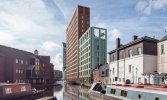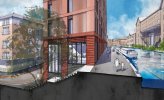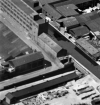I have made my objections to the planning application.
Here are a few words of guidance if anyone nbeed them
I am writing to express my strong objection to the proposed planning permission to demolish the historic building located at 52-60 Gas Street. The building, has been a landmark in our community for generations, is a valuable part of our cultural heritage and should be preserved for future generations.
It is not only an architectural treasure but also a testament to the history and culture of our community. The building has played a significant role in shaping the character of our city and has been a source of pride for many residents.
Demolishing the building would not only result in the loss of a unique and irreplaceable piece of our cultural heritage but also have a negative impact on the surrounding neighbourhood. The building's destruction would likely lead to a loss of character and charm, replacing it with a modern development that would not be as aesthetically pleasing or historically significant. I would invite you to also consider that this example would be crucial to the promotion of good built and historic environment conservation policy and practice.
Furthermore, I believe that there are alternative options that could be explored to preserve the building and adapt it for reuse. The building could be restored and repurposed as a museum, art gallery, or community centre, or other commercial activity which would not only preserve its historical significance but also provide a valuable resource for the community.
Therefore, I respectfully request that you deny the planning permission to demolish the historic building at 52-60 Gas Street. Instead, I urge you to work with local preservation groups and stakeholders to explore alternative solutions that would allow us to preserve this valuable piece of our cultural heritage.
Thank you for considering my objections. I look forward to hearing your decision on this matter.









